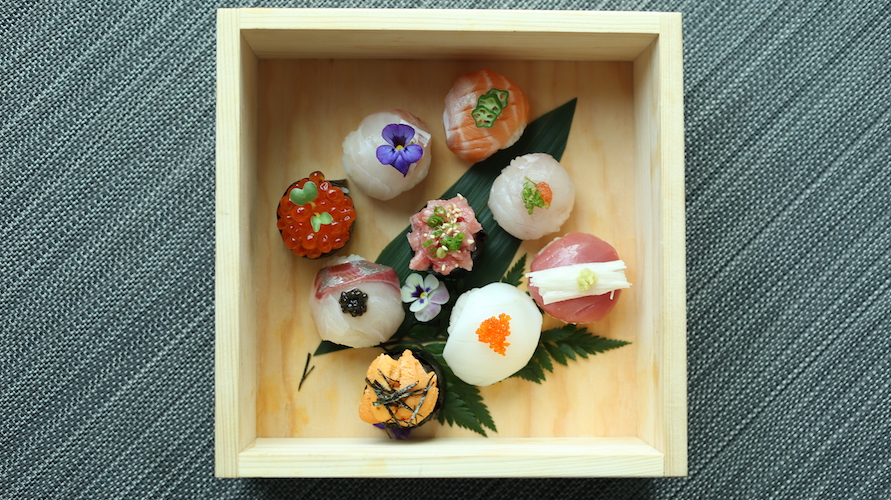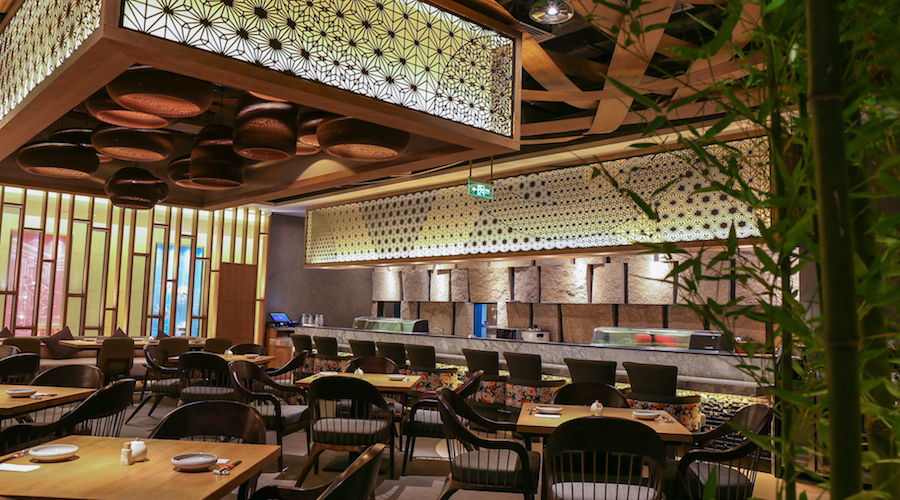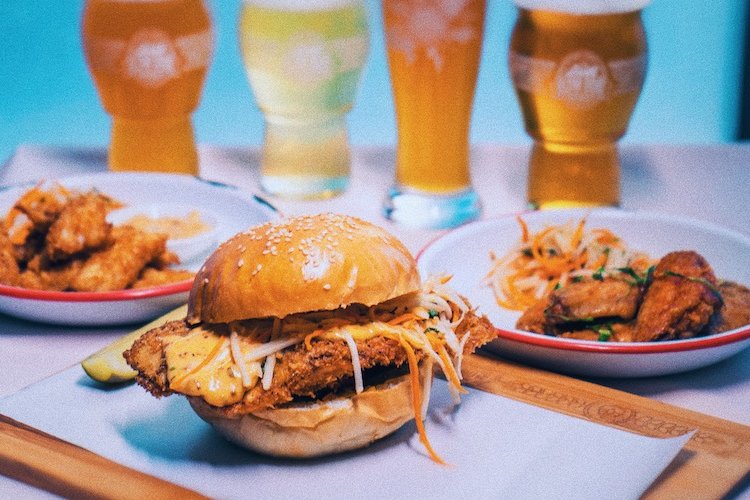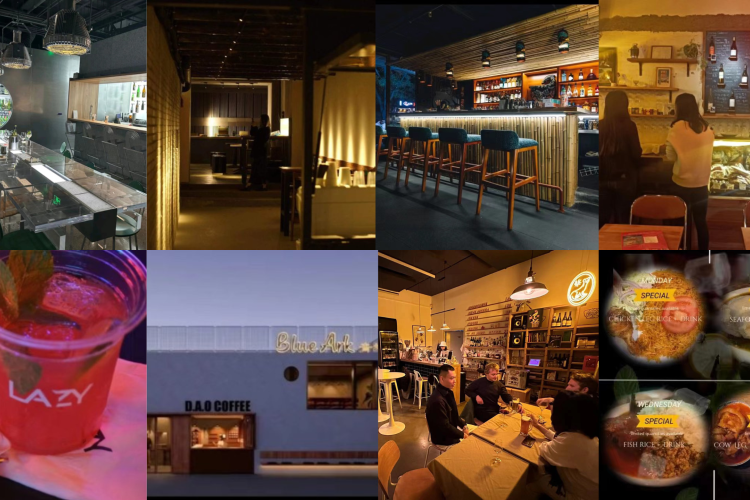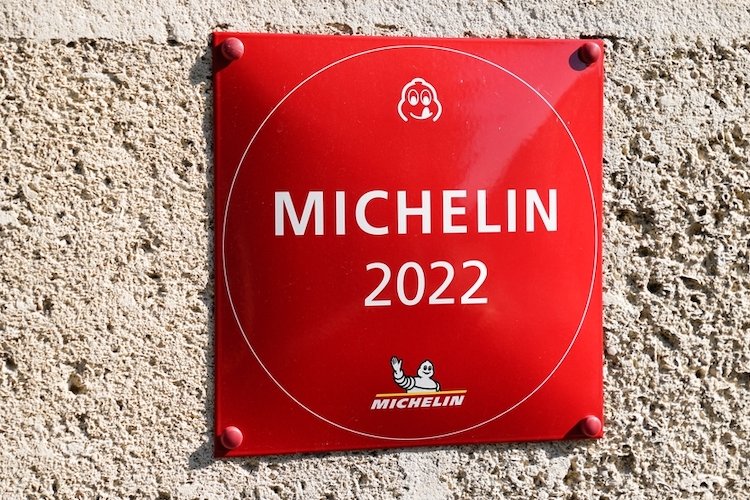HANA by Hatsune Offers Creative, Ingredient-Led Japanese Dining
It is hard to talk about Beijing’s international dining scene without touching on Hatsune. Since the first branch opened on Guanghua Lu 16 years ago, Hatsune has become synonymous with creative Cali-style Japanese cuisine and excellent service. Now, in 2017, they are once again bringing something new to the Beijing market with the opening of HANA by Hatsune in China World Mall.

With a design inspired by the tranquil bamboo gardens of Kyoto and floor-to-ceiling windows that offer unparalleled views of the iconic CCTV Tower, HANA smashes any preconceived notions you might have about sterile mall dining. “We came up with the name HANA for three reasons: Firstly, HANA translates as ‘flower’ in Japanese because this restaurant really represents a flowering of the Hatsune concept. Secondly, we took inspiration from the Hawaiian term ‘ohana,' which means family, as we wanted to create a place where people – families, friends or otherwise – could come together and enjoy food together. Thirdly, my wife is named Hannah (although the spelling is different),” the Hatsune Group’s visionary owner Alan Wong explains.
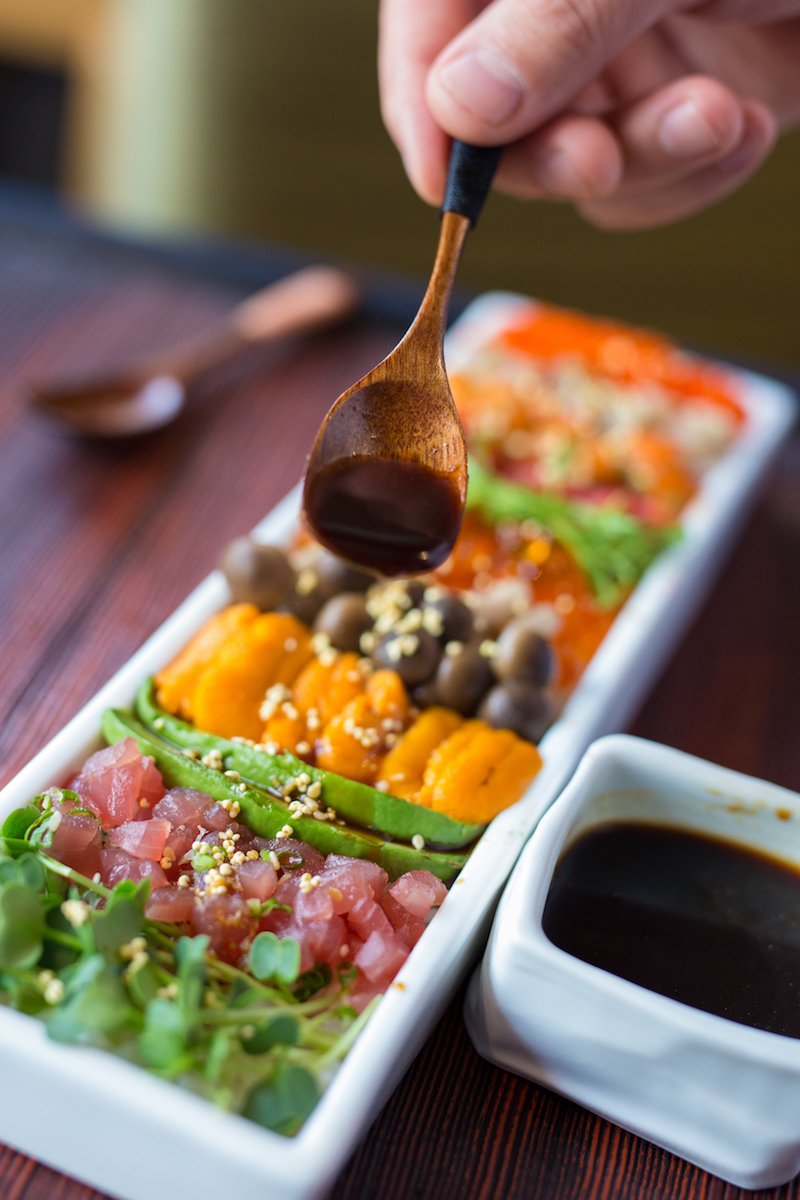
However, where HANA really stands out from the rest of Hatsune Group – and indeed, many other restaurants in Beijing – is its “material-led” concept, showcasing individual ingredients using premium raw materials. “I wanted to do something different from Hatsune, something not so mainstream, a little more 'foodie'-biased. I wanted to expand our creativity and limits,” Wong says. Opening the menu, guests will find a page of unagi dishes, a page of scallop dishes, a page of beef dishes, and so on. “We want to make these exceptional raw materials accessible to diners so we try not to mark up the prices.”

This new, more creative concept has also enabled Wong to move forward with new dishes that he has wanted to try for a long time but that didn’t fit with the other Hatsune menus. For example, among the sashimi and sushi on the HANA menu, diners will also find Tokyo ramen. “My thinking is: you eat a bowl of ramen, you gain a pound. I haven’t had ramen in Beijing that lives up to that standard so I wanted to make sure we do it here,” Wong explains. The ramen is made to an exacting, traditional Japanese recipe, the pork bone broth stewed for hours to create the requisite level of richness. Wong recommends ordering the ramen to share between a couple of people, so you don’t ruin your appetite for the rest of the dishes.
Among those dishes, must-orders range from the extravagant – seared live scallop wrapped in nori – to the every day – yuzu grilled chicken wings – but all are executed beautifully, with eye-catching (and eminently Instagrammable) presentation. Some of the dishes, such as the Niseko pork bowl with grilled pork and onsen egg, have appeared on the menu at Hatsune as limited edition dishes, emphasizing the continued interplay between the two brands.

Looking ahead to the future, there will only ever be one HANA in Beijing and Shanghai but diners will find plenty of reasons to keep making the journey back. “HANA will be kind of a test kitchen for new dishes at Hatsune, so there’ll always be something new to try,” Wong says. Look for HANA hosting occasional guest chefs and pop-up dinners, such as their recent collaboration with chef Jordan Keao from renowned modern Hawaiian eatery ‘āina in San Francisco. “When we bring in guest chefs like Jordan, at least 50 percent of the motivation is to show our chefs the creativity and work ethic of chefs from other places and introduce them to new tools and techniques. We want to show that we are always pushing and encourage them to push themselves,” Wong finishes. If the menu at HANA is anything to go by, their hard work is already paying off.
HANA by Hatsune
Daily 11.30am-2pm, 5.30-10pm. 6/F, China World Mall North Building, 1 Jianguomen Waidajie, Chaoyang District (8599 6131)
朝阳区建国门外大街1号国贸商城北区6层

This post is sponsored by the Hatsune Group.
Photos courtesy of HANA by Hatsune

